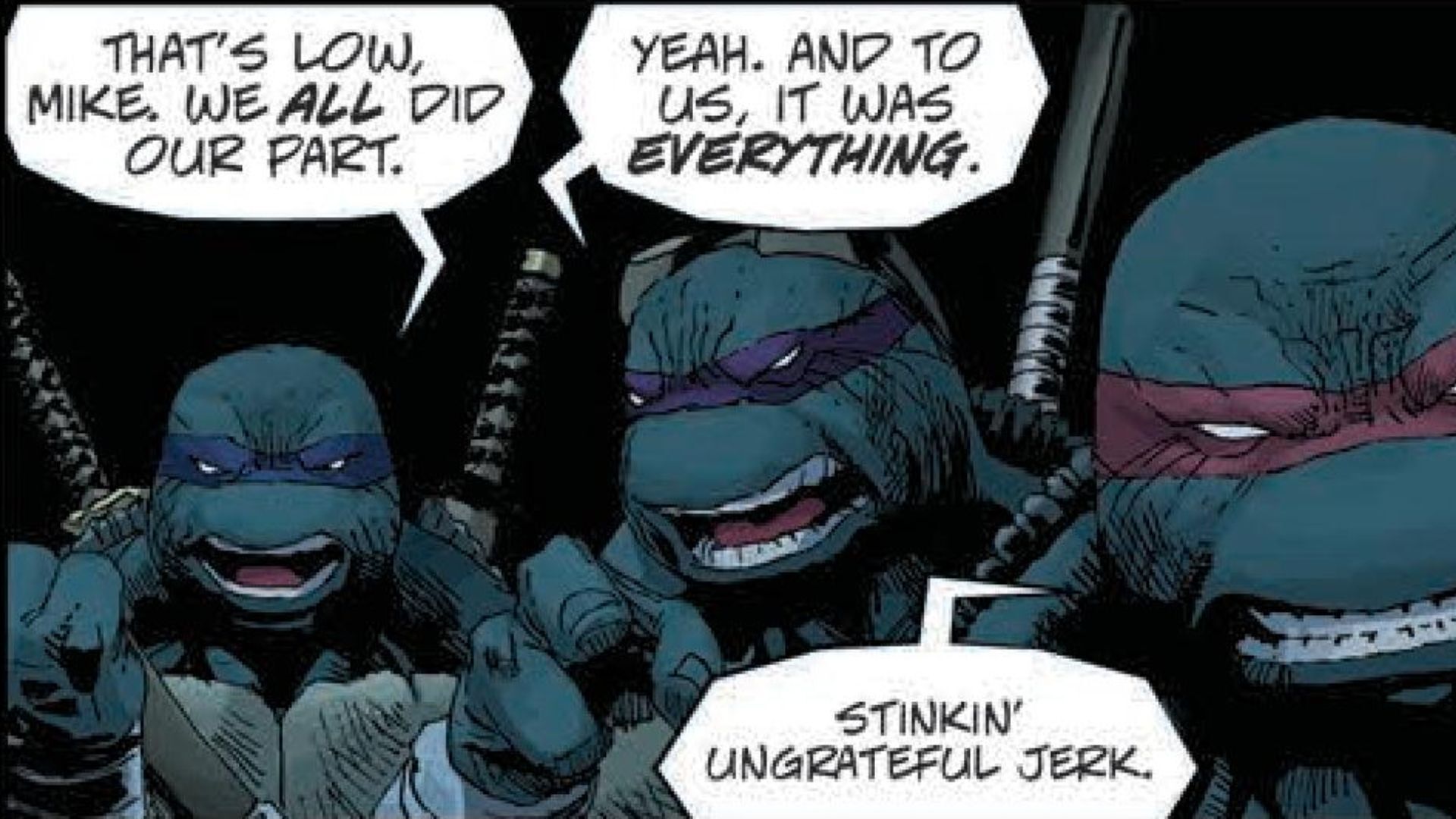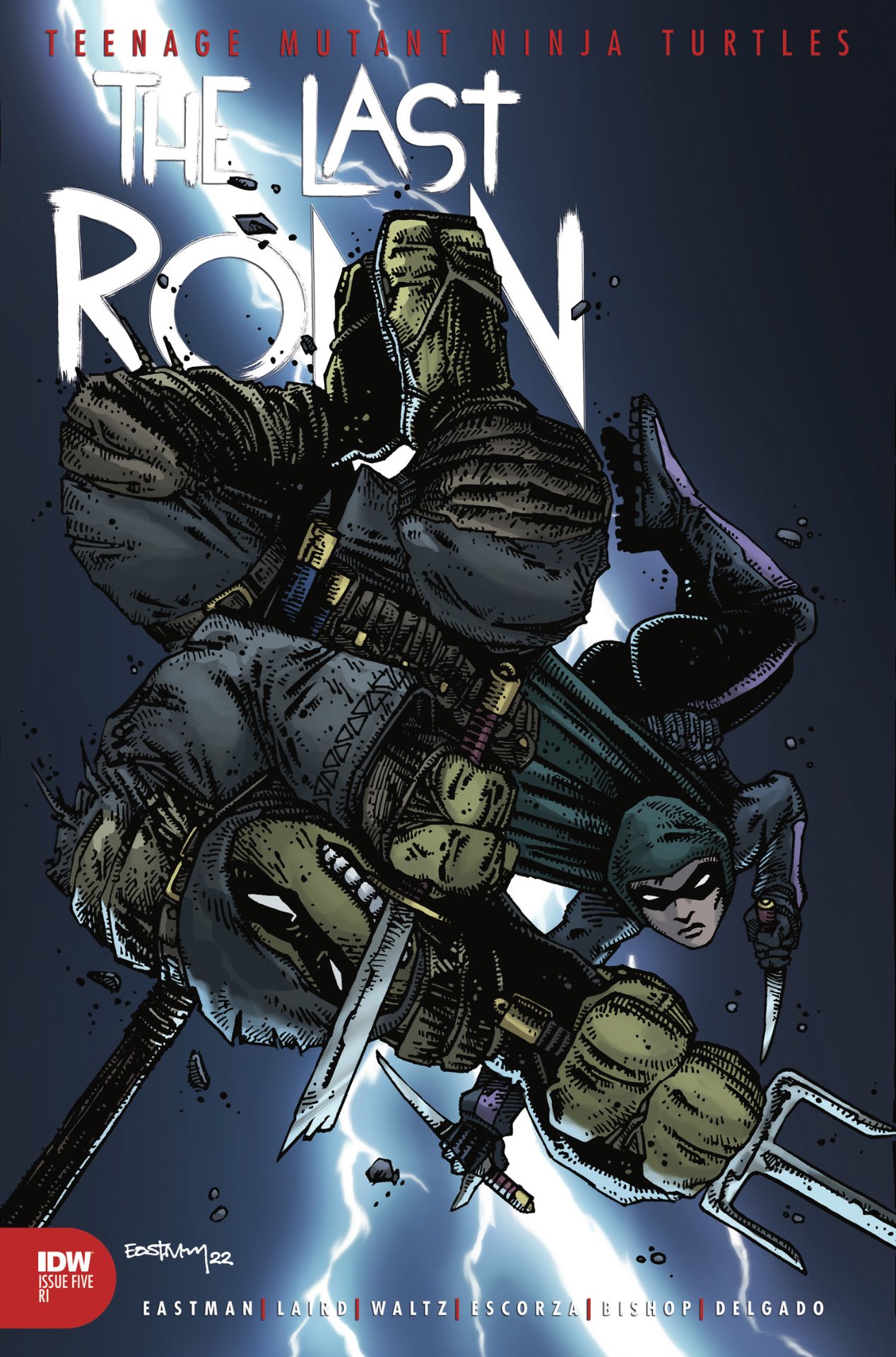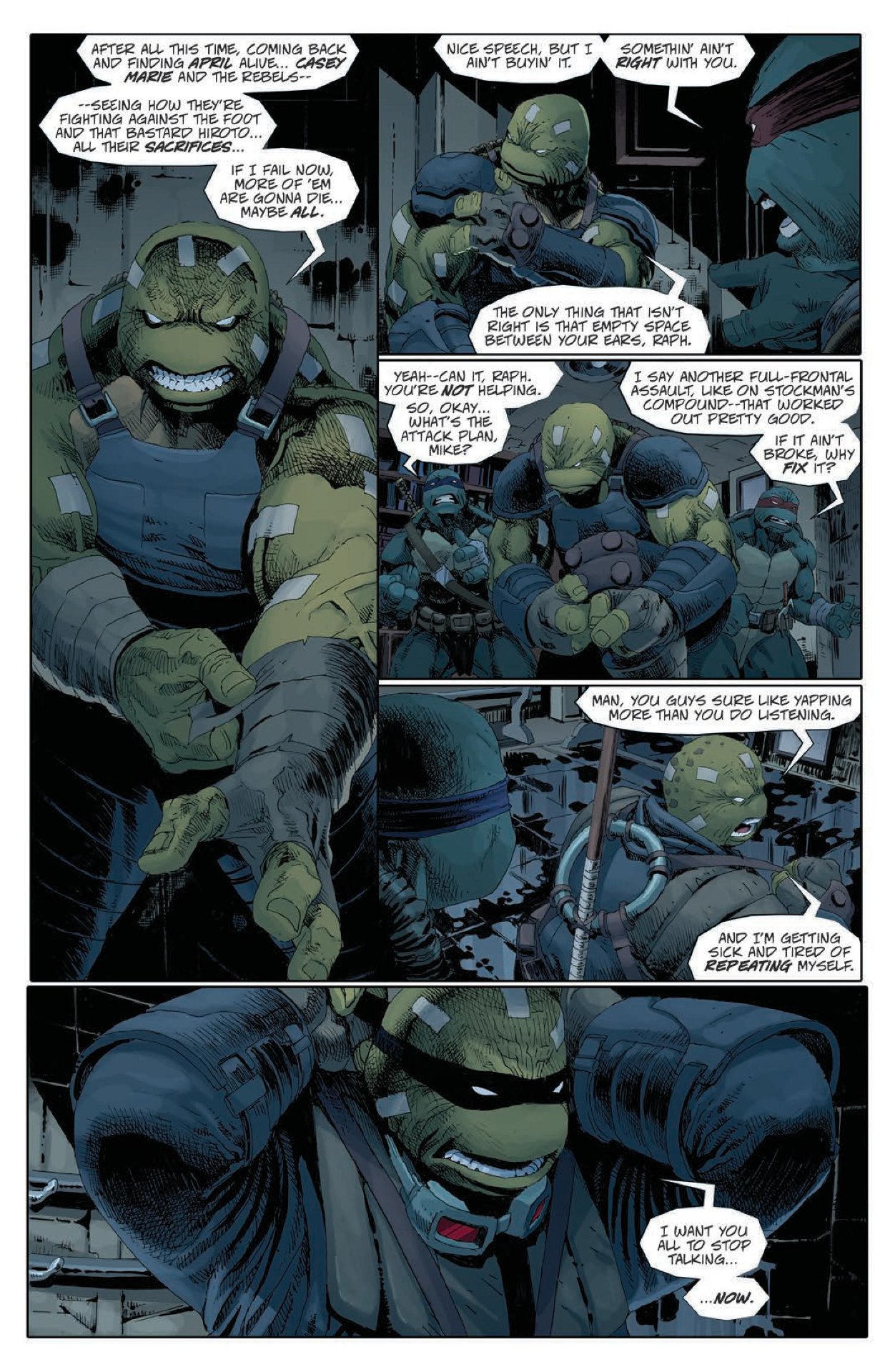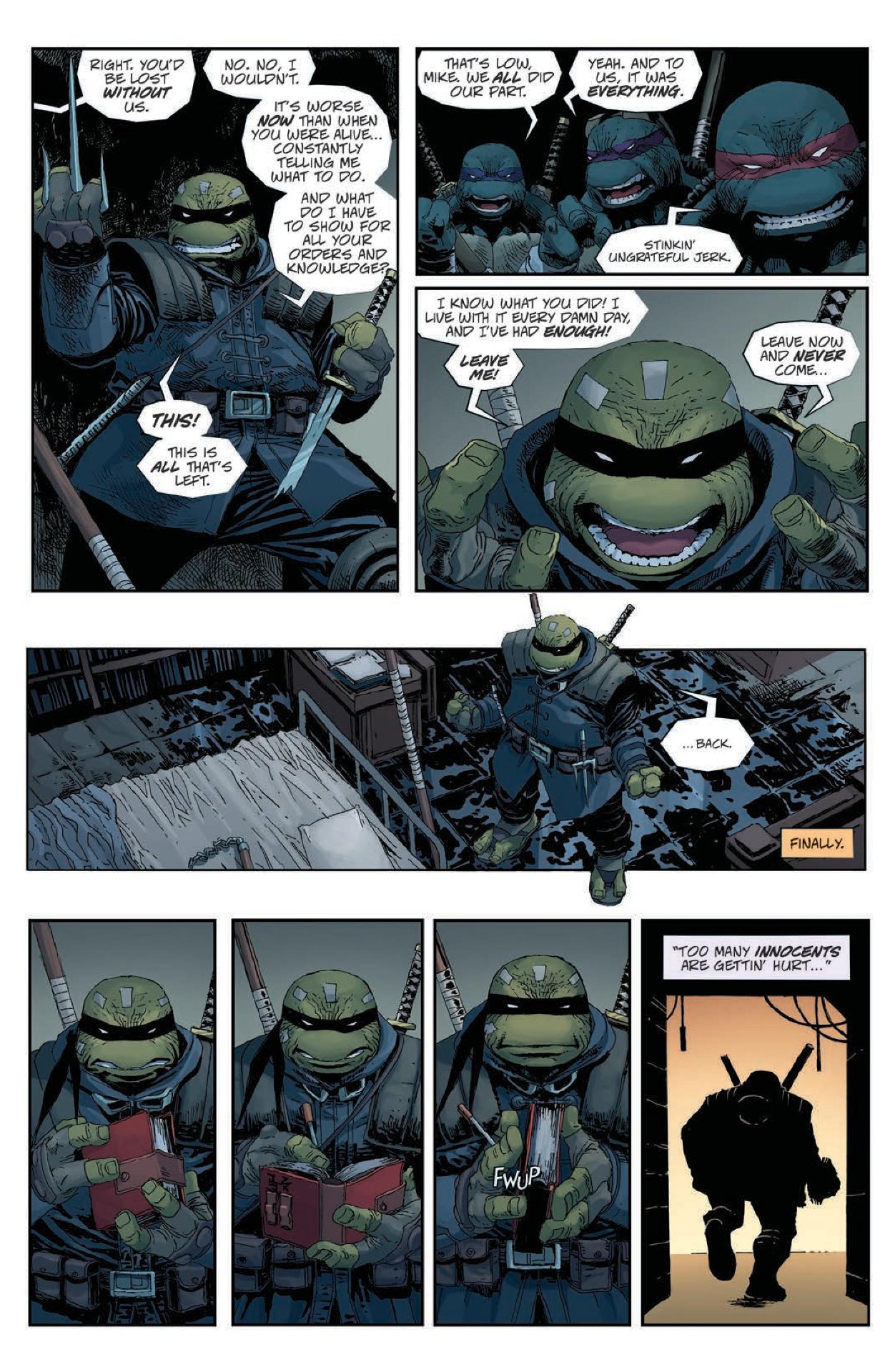TMNT: The Last Ronin #5 first impressions - finale concludes Michelangelo's story brilliantly
The long-awaited finale of TMNT: The Last Ronin has more success finishing its hero's story than its villain's

Who is The Last Ronin?
It was the biggest question of 2020 for the TMNT fanbase. Now, three issues and nearly two years after the release of the first chapter, readers have not just the answer to the Last Ronin's identity, but how his brothers and father died, how Shredder's grandson took control of New York, and who else is still around to oppose the villain. Now, the stage is set for one last confrontation between good and evil, between Clan Hamato and Clan Oroku. In Teenage Mutant Ninja Turtles: The Last Ronin #5, TMNT fans will, at last, have their last questions about the mystery turtle answered.
Written by Kevin Eastman, Peter Laird, and Tom Waltz
Scripted by Tom Waltz and Kevin Eastman
Layouts by Kevin Eastman
Penciled by Esau and Isaac Escorza, Ben Bishop, and Kevin Eastman
Colors by Luis Antonio Delgado and Ronda Pattison (with Samuel Plata)
Lettered by Shawn Lee
'Nrama Rating: 6.5/10
What will happen to The Last Ronin, AKA Michelangelo, and will it be satisfying?
Teenage Mutant Ninja Turtles: The Last Ronin #5 is written by Tom Waltz and Kevin Eastman, with a story by Waltz, Eastman, and TMNT co-creator Peter Laird. Eastman provides layouts for the story, with pencils from Eastman, Esau and Isaac Escorza, and Ben Bishop, and colors by Luis Antonio Delgado and Ronda Pattison, with assistance from Samuel Plata. Finally, Shawn Lee rounds off the team by providing the lettering.
The final chapter of The Last Ronin saga begins with the impending march on the headquarters of Oroku Hiroto, son of Karai and grandson to the Shredder. Issue #4 ended with our heroes, Michelangelo, April O'Neil, and her daughter Casey Marie, taking out the cybernetically advanced Baxter Stockman, who provided Hiroto with his cyborg police force. We open in the quiet before the storm, as Michelangelo converses with the ghostly visions of his lost brothers, who have been with him since the series began.
The dead turtles offer a variety of support and criticism to Mikey, but as he nears the moment of his final strike against Hiroto, he decides their voices are too much. He shouts at them to be gone, and for the first time since we’ve caught up with the still-mutant turtle, he is truly alone in his thoughts. Whether or not that’s a good thing for what he does next is something you’ll have to read the book to find out.

However, what Mikey's solitude is definitely good for is the story. With issue #5, writers Waltz and Eastman firmly cement this as Mikey's story. Up until now, we've been getting flashbacks of all the other Turtles, mostly to explain how they died. These were important to the story and emotionally impactful, but Waltz and Eastman were smart to keep this issue strictly in the "modern" day of the story's dystopian future. His mutant brothers may have helped start the events of The Last Ronin, but it's the titular character himself that's going to finish them.
Get the best comic news, insights, opinions, analysis and more!
On the flip side of Mikey's character is our primary antagonist, Oroku Hiroto. While the character is enjoyably sinister, Hiroto is the main shortcoming of the series as a whole. He's all over the map as a villain; at one point it seemed he killed the TMNT as revenge for Raphael putting his mother Karai in a coma, but there's a moment in this issue that negates that theory. At another point, it seemed like he was obsessed with the honor of the Oroku clan, but we learn that to be a ruse as well in the way he killed Donatello and Splinter.
Unfortunately, the erratic nature of his character takes away from the final confrontation with Michelangelo - we understand our hero but not the threat he faces. Still, Hiroto ends up taking on his grandfather's legacy in one very visually satisfying scene, and that goes a long way in cementing this story as the final showdown between Clans Oroku and Hamato.

Speaking of satisfying visuals, a lot of the brilliance of this book is owed to the world pencilers Escorza (x2) and Bishop bring to the page. The dystopian NYC of The Last Ronin is a crowded, cyberpunk nightmare, and the team's art immerses the reader in it in a visceral way. A reader could spend a week looking at the details this team has managed to cram into their panels and still miss at least one or two things. This is especially gratifying in the final battle scenes; seeing our heroes up against a fully-detailed army of Foot Ninjas and robots reminds us just how low the odds are that they'll succeed.

And by the way, the art doesn't forget about those characters in their solitary moments. There's some fantastic character work in this book to make the quieter moments just as impactful as the loud ones. Whether Michelangelo's leaping through a skyscraper floor swarming with Foot Ninja or sitting alone reading his father's journal, the emotion of the scene comes through very well.
To be fair, though, a lot of that emotion comes from The Last Ronin's colors. Delgado, Pattison, and Plata have worked overtime to show the reader that, though this story may be set in the future, it is not a bright one. Pollution chokes the sky of NYC and the waters that surround it, and the colorists bring that to life with genius use of sludgey colors like brown and green.
There's a kind of hopeless dread that these colors evoke on the page, very similar to the one Lynn Varley created when she colored Batman's first battle with the Mutant Leader in The Dark Knight Returns. In fact, there's one very important (and very muddy) fight scene that will no doubt draw comparisons to that seminal comic book fight, and those comparisons will be well earned.
Finally, we'd be remiss if we didn't mention this comic's gorgeous pacing, owed to Lee's lettering. For all the action-packed visuals, there's also a ton of dialogue, both internal and external. However, there isn't a single panel that his dialogue slows down the thrilling speed with which this comic moves. Lee knows how to guide the reader's eye through the page and not distract from the emotion and excitement in the action. The Last Ronin #5 reads very quickly, which is impressive considering that it's nearly double the size of a regular comic book.

But no matter how long you take to get through this gorgeous, gripping story, you're going to wind up at the end, having answered the questions with which we started this review: What will happen to The Last Ronin, and will it be satisfying? And while we at Newsarama will absolutely not be spoiling the answer to that first question, we're going to go ahead and take a crack at that second one. Is TMNT: The Last Ronin #5 a satisfying conclusion to the story?
Well, yes and no.
As a conclusion to the eternal struggle between the Hamato and Oroku Clans, The Last Ronin #5 falls short of the mark. The villain Hiroto's motivations and levels of skill vary too greatly so that his last moves against Michelangelo & Co. leave the reader wanting more. As a "big bad," Hiroto has let down the threat of his mother, grandfather, and Foot Clan.
However, this really isn't Hiroto’s story, it's The Last Ronin's. And as a conclusion to Michelangelo's arc, the finale succeeds brilliantly. For years, Mikey's status as the goofy Turtle made him feel like the youngest member. His pizza-crazed antics and constant jokes gave him the feel of a little brother, a kid amongst adults. By the end of The Last Ronin, Mikey accepts his role not just as an adult, but as someone who has to make the world better for the kind of kid he once was.
Like we all are.
TMNT: The Last Ronin #5 hits comic book shelves and digital platforms everywhere on April 27th.
The Teenage Mutant Ninja Turtles are one of the best teen superhero teams of all time.

Grant DeArmitt is a NYC-based writer and editor who regularly contributes bylines to Newsarama. Grant is a horror aficionado, writing about the genre for Nightmare on Film Street, and has written features, reviews, and interviews for the likes of PanelxPanel and Monkeys Fighting Robots. Grant says he probably isn't a werewolf… but you can never be too careful.


